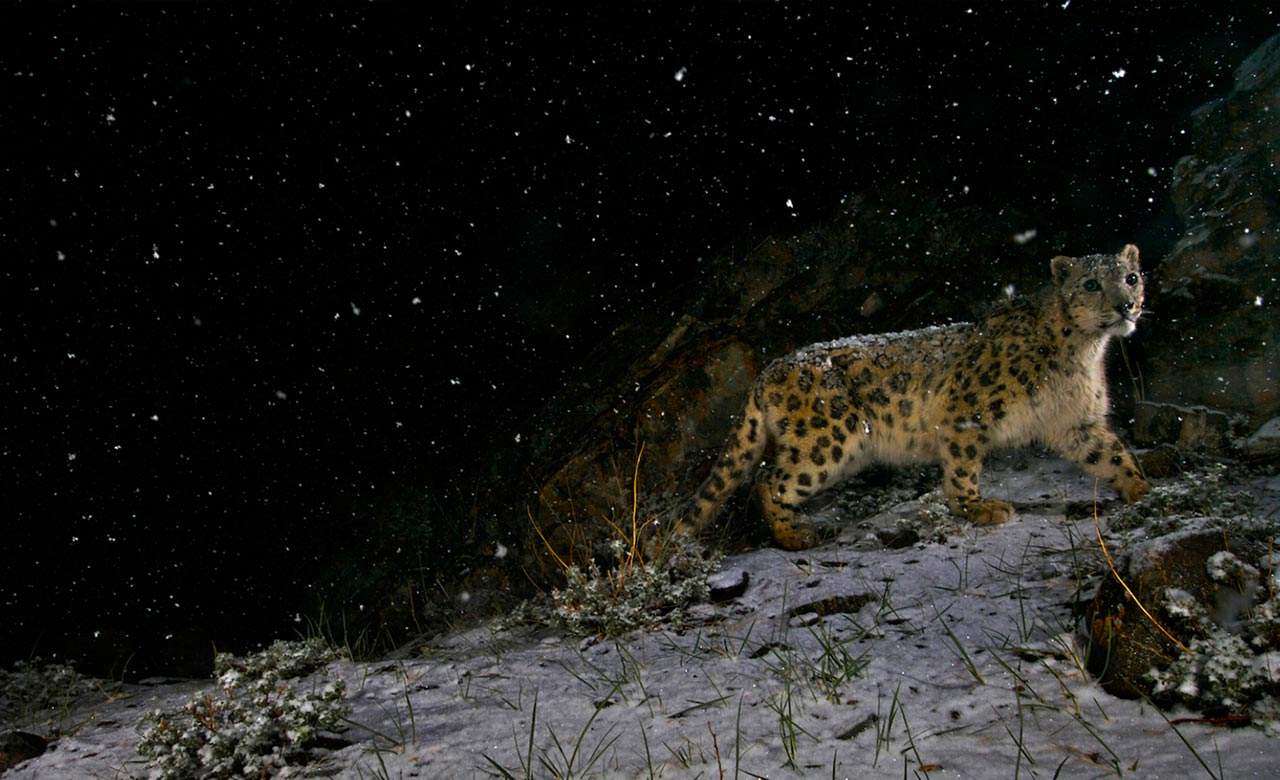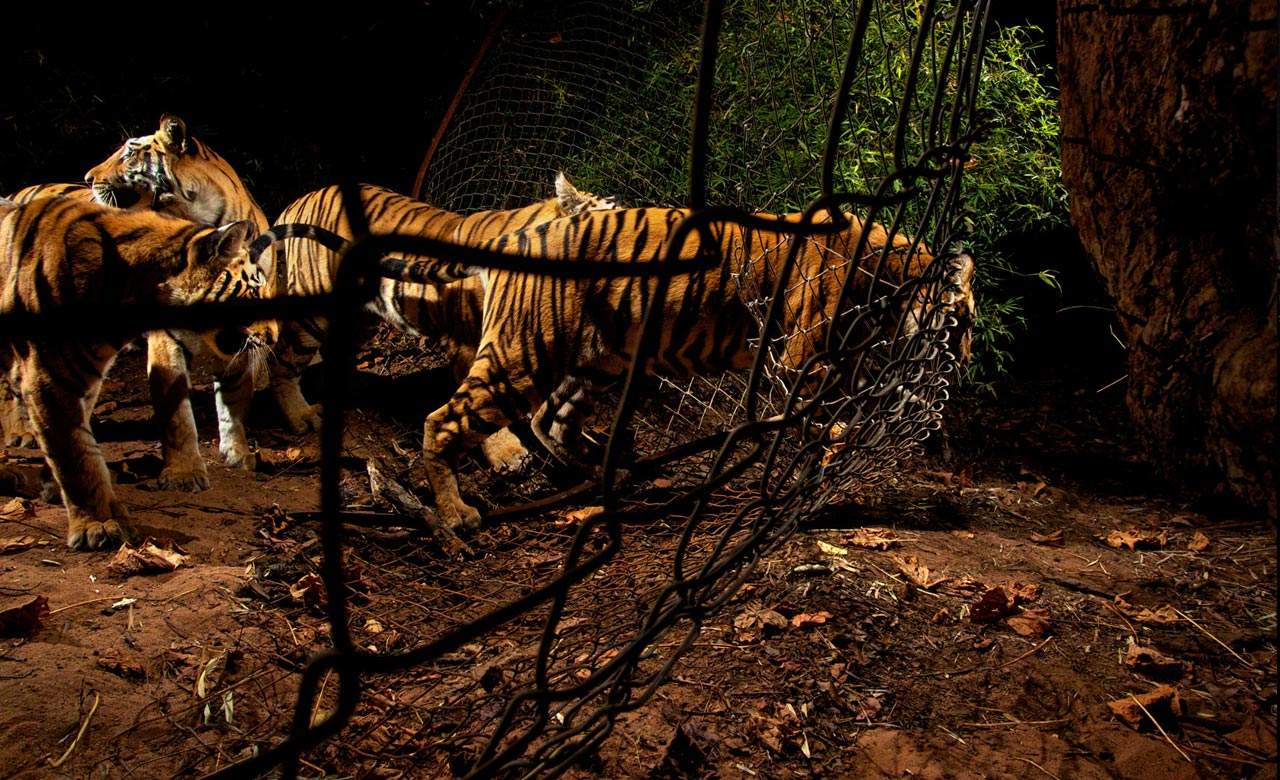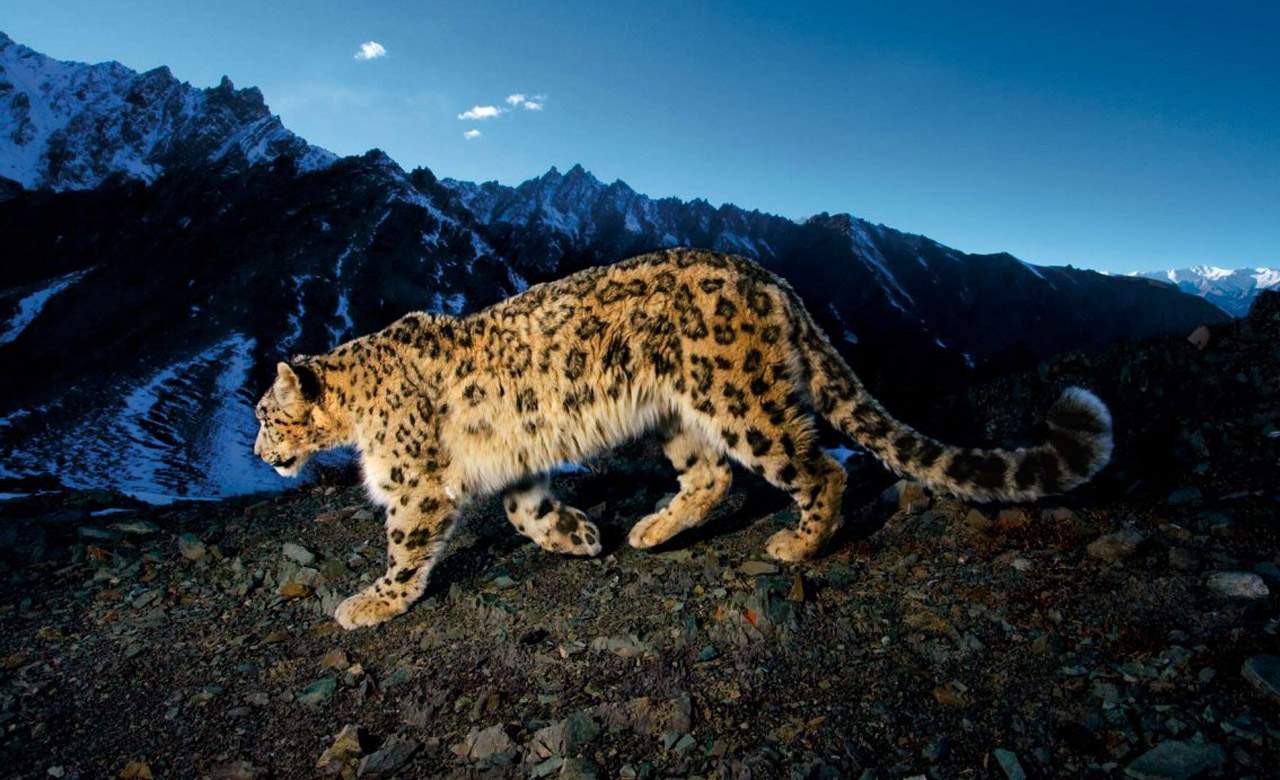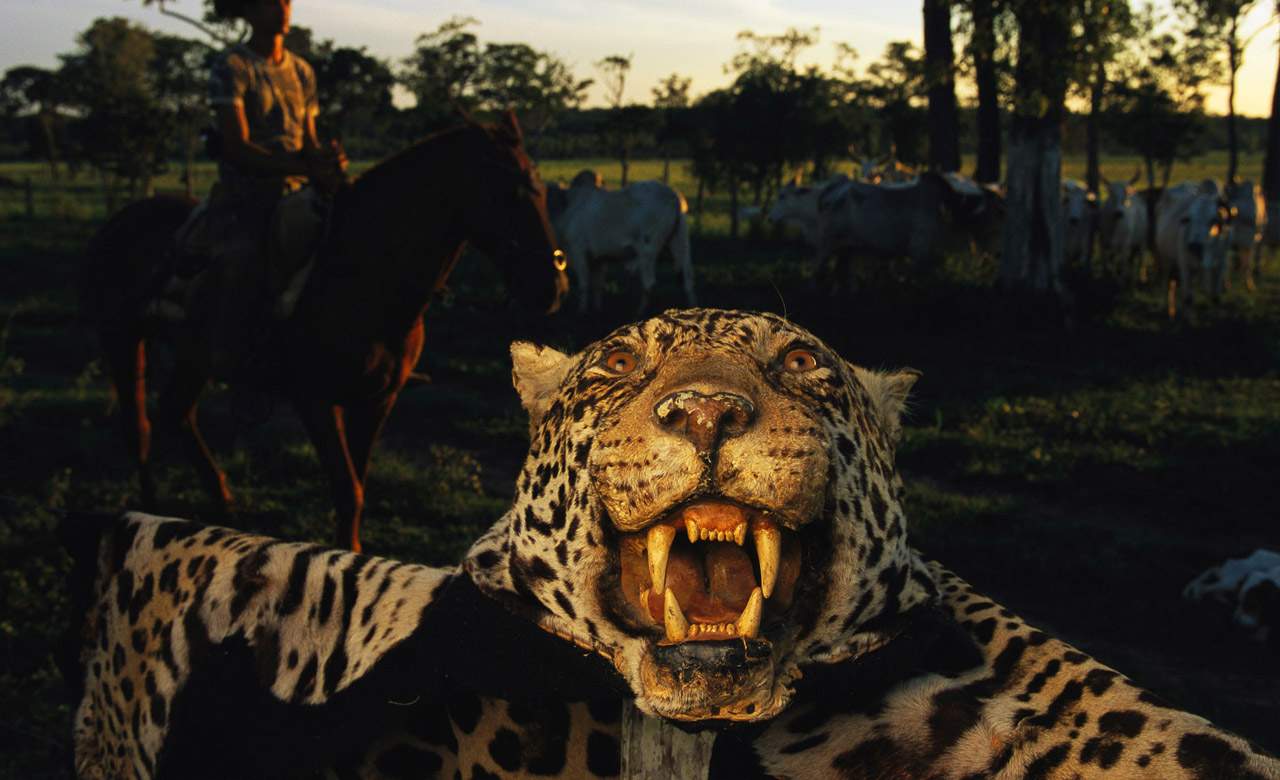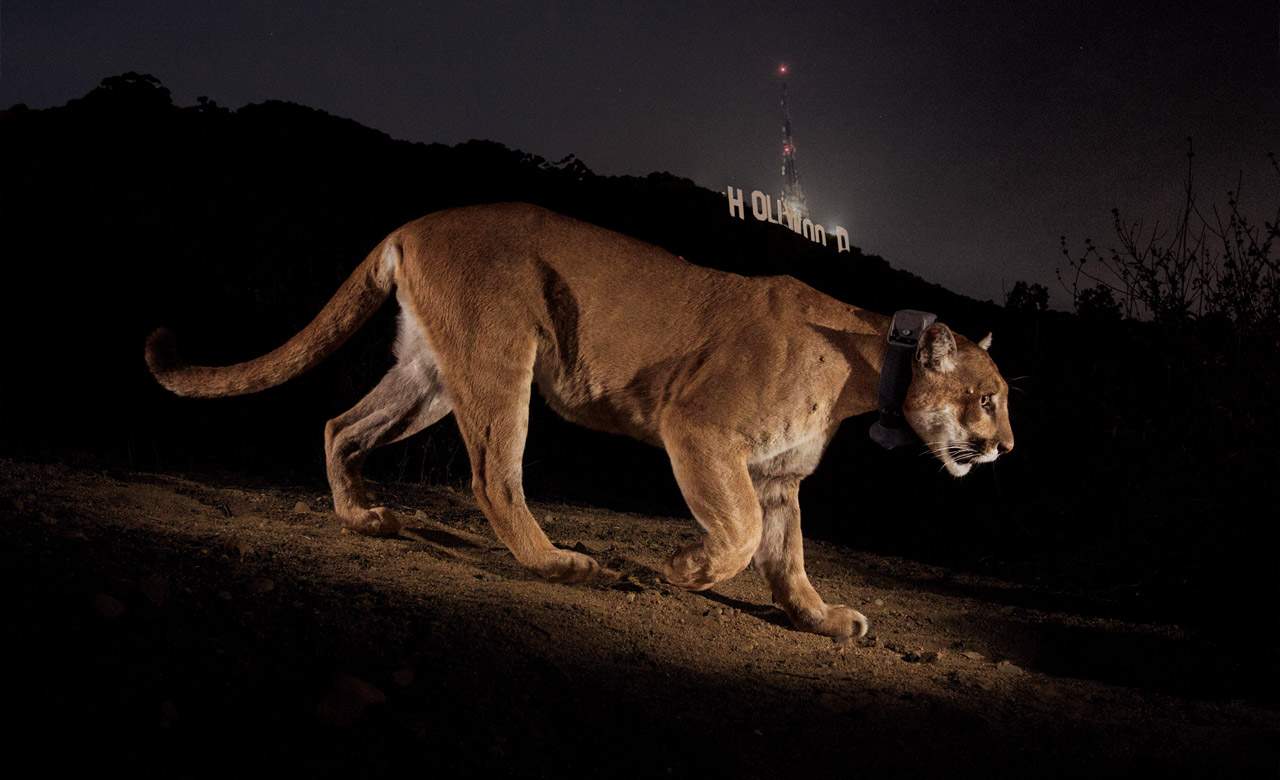National Geographic Photographer Steve Winter on Competing with Pictures of Cute, Fluffy Kittens on the Internet
Steve Winter spends six or so months get the shot that you spend six or so seconds looking at.
In 100 years the tiger population has gone down from 100,000 to 3200. In less than 10 years, the rate of photos being uploaded of cats (including adorable, grammatically incorrect kittens) has reached 3.8 million per day (you do the math exactly how many photos of felines that equates to). This is the current media climate that National Geographic big cat photographer Steve Winter navigates.
Growing up in Indiana, Steve Winter realised at the age of eight that he would like to become an anthropological photographer for the National Geographic. "Seeing the iconic images of the Reverend Martin Luther King in LIFE shaped my thinking on how photography could change the world. Those pictures brought the issues facing our country into my home in Indiana. So... I decided I wanted to be a photographer for National Geographic Magazine", he wrote on his website blog. Yet it was only decades later, at the age of 34, when he took his first picture of an animal in Costa Rica that it occurred to him that he wanted to take photos of animals for the rest of his life. Now he specialises in what he calls big cat 'conservation photography'.
In an internet environment which is saturated with cheap thrills, cat photos and click-bait, we talk to him about negotiating the need to get serious conservation messages across (which aren't nearly as popular or viral) with the need to still compete for attention with all those fluffier photos.
Laetitia Laubscher: What kind of research do you put into your stories?
Steve Winter: An incredible amount. This is the part that nobody knows, I had to spend months getting permits to actually get permission to work in the areas that I wanted to work in India [where he is currently photographing leopards] and then it took two and a half months to get a journalist visa just because of political reasons – not everybody loves me in India – and I had to figure out where I should go photograph this conflict and other situations. And you know, you have to have people trust you so that when you ask them, 'you know I really need to go see conflict leopards' and they go 'oh, sure', or 'oh, you're from National Geographic we actually trust ya, and we know your work, so yeah come see these leopards we don't let anyone else see'. And I'm like, 'you know, you could've shot them, but you let them live in a facility for the rest of their lives because they've caused some trouble and people would want to know that these leopards are actually alive'. But trust gives me the opportunity to actually do this, um, but that's based on actually knowing that those places exist and then finding the areas and getting people to say yes – golly, it's so much work, people don't realize how much work actually goes into getting to the point where you actually walk out the door with 28 bags of equipment. Customs forms! You know? Being able to get into a country with all this equipment. Golly, it takes months before I can actually walk out the door.
LL: With your snow leopard shots you were using quite a lot of intricate, studio lighting and camera traps - where did you get the inspiration from to have a staged wildlife portrait shoot out in the wild?
Steve Winter: Well, the problem was that I proposed the story so I had to be successful at it. And there was no way to do it in person because the snow leopards weren't used to seeing people, so they would run away. There were no cats that you could see, and the only way I was going to be successful was using remote cameras. So, um, I did. And it was kind of driving me crazy, I knew that when the cat went past the camera, it had to take a good photograph. Whether it was in the middle of the night, where you couldn't see the landscape where it lived, or whether it was at twelve noon. So I had to figure out a way to make that work. I did figure out a way to make it work. I mean, they were high stylized pictures in a way, but all I did was track the cat with the help of the local people, and then I found a landscape photograph that I would've taken anyway even if the cat wasn't there, and put the camera almost on the ground, and put the infrared beam where I wanted the cat to break the beam in my composition. So that picture became mine. If I was laying on the ground and the cat walked by this is the picture I would take. And I was lucky enough that they came by at incredible times of the day, even the night shot we had I won BBC Wildlife Photographer of the Year on. And the rest of them were at dawn or dusk which is the exact time when I would've taken the photograph.
And even if the snow leopards weren't as shy, I still wouldn't have gotten the same pictures myself – if you a long lens and you're walking around and you see a cat at its marking station – because they do have specific locations that they mark habitually – I wouldn't have been able to set three lights up on it, so I wouldn't have gotten those images, most likely I wouldn't have gotten any images. We saw three cats in the first two days and I never saw another one in six months. The only way to be successful was using camera traps and I just had to figure out how I would do it. And every photograph was a gift. In many of them I got one or two frames in six months.
LL: What keeps you inspired to take photos of big cats like the snow leopard and the tiger?
SW: I really do believe that if we can save the habitat of the big cats then we can help save ourselves. I mean, the forest provides 50% of the oxygen that we breathe. These giant forests that are rapidly disappearing are the lungs of the world along with the oceans. 75% of the fresh water in the world comes from forests. And these are the areas in which these predators live. If you save the top predator in any ecosystem you save everything underneath it. So yeah it's tough, but I believe in what I'm do.
LL: You spent just over six months camping in -40 degrees Celsius in order to photograph the snow leopard. What do you think it takes to survive in remote and harsh conditions like that?
SW: Well, the fact that I'm lucky enough to be able to follow my dream that I had as an eight year old kid to become a photographer for National Geographic and the other answer is that you got to pay the bills and you have to be successful at what you do, you know. You know if you are the person that is coming up with a story idea then you have to be successful. Especially in the media climate today it's extremely difficult. There is no other place in the world that does what National Geographic does. We're driven to succeed and failure is just not an option. It may be a cliché but it's true. I pick things people haven't done before, I try make images that people haven't gotten before because it's the only way we can be successful at starting the conversation on the pages of National Geographic about the topics, species and ecosystems that we're working on.
So I mean I'm in a privileged position working for National Geographic, and we're doing really well, we're the number one brand on Instagram. We may be below Justin Bieber, the Kardashians, Jay Z and Kanye and ah, Beyonce, but we're the number one brand.
LL: That's an interesting point that you bring up, because social media has changed the photography landscape so much. There are a lot of amateur photos of cute kittens online that are raking in millions of views – how do you negotiate the constant demand for photos of cute, fluffy animals with trying to do something different?
SW: Well, I'm not saying that I don't… I post things on Instagram that would maybe not be published – part of time just because I know that there's a desire for people that actually want to see these kinds of animals. I mean in the end it's like 'hey, why not?', you know. We publish just a few images from what we actually get so I have so many pictures so it's like 'hey, it'd be nice to be able to show these, you know?' Different animals, different pictures that I've gotten. So maybe I show a portrait of a tiger on Instagram and it would never get published, but it's a great shot and it's shot in the wild and I went through a lot of blood, sweat and tears to get it and on Instagram I'd get 500,000 likes! And guess what? People are looking at National Geographic, not something else. So we actually, I actually believe that if they're going to National Geographic then it's kind of like they're getting a bit of an education because they're seeing people and culture and animals that may not be their normal Instagram thing of selfies of themselves or friends or whatever they do.
LL: Yeah, totally. But how do communicate certain issues of conservation that are more serious and more negative while still competing with those cuter images?
SW: Well, listen. Pretty pictures of animals are not going to save the species. We do a disservice by not telling the story of the reality of these species and the situation that they're in, the people that they live with – and how we as humans affect them in their daily lives.
I mean, I just came back from India and right now people are looking for coal all over India and so when I'm doing tigers, if I don't show deforestation I'm not telling the truth. If I go to Tadoba Tiger Reserve in India, and I go to the front gate and if I turned around 180 degrees I would see one of the biggest holes in the ground, in the world. Now, I have never ever, ever seen that. We didn't run it, I only did video of it actually, but the fact that I'm the only person that snuck in and got that pictures – actually, I didn't sneak into that particular coal mine there – um, but it means that people aren't telling the story. And it means that if tigers are under threat and their biggest threat is habitat loss but the only threat we talk about is poaching then we're not telling the whole story.
What if you did a story on elephants and didn't cover the fact that every 15 minutes an elephant is killed for the ivory trade? I mean, you have to do that. I mean, the picture I have of a baby elephant looking at the camera again got half a million likes on Instagram, but if you read the caption, the first line says "Every fifteen minutes an elephant is killed for its ivory." So you see this picture – I hooked ya. I got you to look at the picture. How many, what percentage of people are actually going to read the caption I don't know, but when I look at the comments I can see that more people read the caption than I thought did. But most of the captions read 'Oh, how cute' or 'I want one'. So they're kind of like, sad.
But I'm glad that people are loving the image, but I'm just super happy that they actually read the caption. And you know, I cover the story. And some of the images I have people tell me 'don't show that', but it's like, hey, my colleagues look at pictures and say 'why didn't the crem-, the tiger being burnt alive run?', because no one's ever seen it before and I go 'you know why it didn't run'. No matter how hard I fight if it's not an integral part of the story they're not gonna run it. So I put it in the tiger book that National Geographic published. But you have to tell the story because we're inundated 24/7 with images, and if people don't understand what the story is they just go 'oh, that's so nice… I love tigers'. Or 'I love [some other animal]'.
But they don't understand that unless you do something pretty quick the only ones you're going to see will be in zoos. So we need to tell the story. Is it easy? No. It's very difficult. I mean, I just spent five weeks trying to tell the story of leopards in conflict zones in India, and it's really difficult. And nothing bad happened while I was there and you say two things: thank god for the leopard and the people that nothing happened, but also I didn't get to tell the story, so we had to find pictures on the wire services. Because you've got to be at the right place at the right time and we don't have enough money for me to spend months there waiting on a leopard that ends up sadly at dawn stuck in a town where he tries to find some food and then everybody attacks him. And then maybe he attacks back or something like that. It's really sad, but it's the world in which we live. And I'm covering the most adaptable cat in the planet that lives with us and 99.9% of the time we never have a problem with him because we don't even know they're there.
Steve Winter will be talking on Wednesday, August 5 in Auckland's ASB Theatre and on Thursday, August 6 at Wellington's Te Papa as part of his 'National Geographic Live: My Nine Lives' talk.
